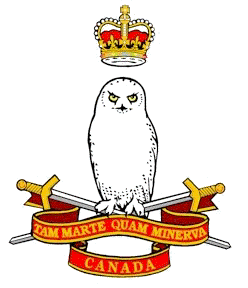Paraneaetha is a monotypic genus of Egyptian jumping spiders containing the single species, Paraneaetha diversa. It was first described by J. Denis in 1947, and is only found in Egypt. The name is a combination of the Ancient Greek "para" (παρά), meaning "alongside", and the salticid genus Neaetha.

The Canadian Army Command and Staff College (CACSC), formerly the Canadian Land Force Command and Staff College, is a school for officers of the Canadian Forces, specializing in staff and army operations courses. It is located at Fort Frontenac, in Kingston, Ontario, Canada.
Clavus aenigmaticus is a species of sea snail, a marine gastropod mollusk in the family Drilliidae.
Defretinella is a genus of parasitic alveolates of the phylum Apicomplexa.

Opecoelidae is a family of trematodes. It is the largest digenean family with over 90 genera and nearly 900 species, almost solely found in marine and freshwater teleost fishes. It was considered by Bray et al. to belong in the superfamily Opecoeloidea Ozaki, 1925 or the Brachycladioidea Odhner, 1905.

Cebrennus is a genus of huntsman spiders that was first described by Eugène Louis Simon in 1880. It is considered a senior synonym of Cerbalopsis.
Parachtes is a genus of European woodlouse hunting spiders that was first described by P. Alicata in 1964.
Pterotricha is a genus of ground spiders that was first described by Władysław Kulczyński in 1903.
Arachosinella is a genus of Asian dwarf spiders that was first described by J. Denis in 1958. As of May 2019 it contains only two species from Russia and Central Asia: A. oeroegensis and A. strepens.
Brachycerasphora is a genus of dwarf spiders that was first described by J. Denis in 1962.
Chenisides is a genus of African dwarf spiders that was first described by J. Denis in 1962. As of May 2019 it contains only two species: C. bispinigera and C. monospina.
Cherserigone is a monotypic genus of North African dwarf spiders containing the single species, Cherserigone gracilipes. It was first described by J. Denis in 1954, and has only been found in Algeria.
Didectoprocnemis is a monotypic genus of dwarf spiders containing the single species, Didectoprocnemis cirtensis. It was first described by J. Denis in 1950, and has only been found in Algeria, France, Greece, Morocco, Portugal, and Tunisia.
Dresconella is a monotypic genus of Spanish dwarf spiders containing the single species, Dresconella nivicola. It was first described by J. Denis in 1950, and has only been found in France.
Enguterothrix is a genus of dwarf spiders that was first described by J. Denis in 1962. As of May 2019 it contains only two species: E. crinipes and E. simpulum.
Lessertinella is a genus of dwarf spiders that was first described by J. Denis in 1947. As of May 2019 it contains only two species, both found in Austria, France, Germany, Italy, Macedonia, Romania, Slovakia, and Switzerland: L. carpatica and L. kulczynskii.

Micrargus is a genus of dwarf spiders that was first described by Friedrich Dahl in 1886.
Sisicottus is a genus of sheet weavers that was first described by S. C. Bishop & C. R. Crosby in 1938. They can be found in moss and litter of conifer forests.
Trichoncoides is a genus of sheet weavers that was first described by J. Denis in 1950.

Navanax aenigmaticus common name the mysterious aglaja is a species of Navanax found in the Pacific Coast of Central America.




